
eyjafjallajokull/iStock/Getty Images
Born out of necessity in the 1800s when hard times meant that no parts of an animal were wasted, cooked pork skins remain a menu item. Belly skin and leg skin are commonly used because of the thick layer of fat underneath the skin. To achieve the signature crispiness, choose pork skin with a minimum of 1/4 inch of fat attached. Scratchings, cracklings or chicharrones are examples of cooked pork skins, but the only difference in the three is the number of times the skin is cooked. The skin and fat becomes increasingly crunchier and puffier each time it is cooked.
Rinse the skin under cool water, removing any hair still attached, and pat it dry with paper towels. Trim the skin as needed to fit inside a rectangular baking dish. A long piece of pork skin can be folded multiple times to fit in the dish, but its width must fit comfortably in the pan.
Lay the skin on a flat work surface. Sprinkle a thin, even layer of salt -- regular table salt, kosher salt or curing salt -- over each side of the skin. Lay the skin in a rectangular baking dish, folding if necessary, and cover tightly with plastic wrap. Refrigerate the skin for about 5 days to cure, a process that draws out moisture to help achieve the signature crunch of scratchings and cracklings.
Soak the cured pork skin in cool water for a minimum of 6 hours or overnight to rinse off the excess salt. The skin should swell slightly from its shrunken, cured state. Remove the skin from the water bath and pat it dry with paper towels.
Cut the skin into smaller, thin strips, if desired, and put them in an oven-safe pan such as a cast-iron skillet. Cover the skin with your choice of duck fat or pork lard. Cover with a lid or aluminum foil.
Preheat the oven to 300 degrees Fahrenheit. Place the skin on the center rack and cook it for approximately 2 hours or until soft. Reduce the temperature, if needed, so the fat bubbles only slightly while cooking. Remove the pan from the oven. You can eat the skin at this stage as scratchings, cook them a second time immediately, or store it in the fat in the refrigerator until you're ready to continue cooking.
Preheat the oven to 350 F. Place the pork skin -- whole or in pieces -- in an oven-safe pan and bake for about 5 minutes or until golden brown. The skin puffs up while cooking, resulting in pork skin more similar to cracklings. You can eat the skins at this stage or cool them down and continue cooking a third time to make extra puffy chicharrones.
Preheat the oven to 400 F. Add the pork skin to the baking pan and cook for 2 to 3 minutes or until they puff up to your preference. Watch the skin carefully to ensure a rich brown color without burning.
Sprinkle the cooked pork skins generously with salt and your choice of additional spices, such as cayenne pepper or garlic powder.
Related Articles

Facts About Inuit Clothing
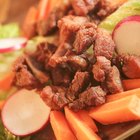
How to Cook Crispy Raw Pork Skins the ...

How Do I Cook Duck Legs in a Dutch Oven?

How to Marinate BBQ Chicken Thighs & ...

How to Juice Pineapple Skin

How Can I Cook Boneless Chicken Thigh ...
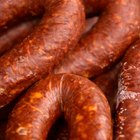
How to Peel Plastic From Sausages
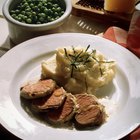
How to Make a Juicy Pork Tenderloin
How to Convection Cook a Pork Shoulder ...

Potato Skins Nutrition Information
How to Boil Pork Jowl Bacon

Can I Substitute Salt Pork for Smoked ...
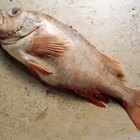
How to Cook Redfish on a Grill

How to Remove a Labret Piercing

How to Cook a Crispy & Juicy Whole Duck

How to Prepare & Cook Smoked Jowl
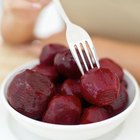
How to Boil Beetroot

How to Check the Internal Temp of a ...
Easy Twice Baked Potatoes Recipe
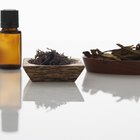
How to Make Rose Hip Skin Tonic
References
Writer Bio
A former cake decorator and competitive horticulturist, Amelia Allonsy is most at home in the kitchen or with her hands in the dirt. She received her Bachelor's degree from West Virginia University. Her work has been published in the San Francisco Chronicle and on other websites.
Photo Credits
eyjafjallajokull/iStock/Getty Images